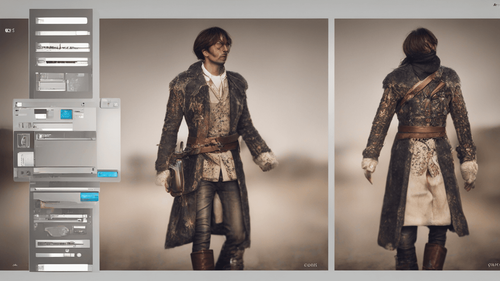
Introduction
In an era dominated by visual content, the demand for innovative and efficient ways to generate images from text has skyrocketed. Enter the realm of text to image generation online, a cutting-edge technology that merges language with visual artistry. In this comprehensive guide, we delve into the intricacies of this exciting field, exploring its significance, potential applications, benefits, and much more.
Understanding Text to Image Generation Online
What is Text to Image Generation?
Text to image generation is the process of using artificial intelligence and machine learning algorithms to convert textual descriptions into compelling visual representations. This technology harnesses the power of language and imagery, creating a bridge between the abstract and the concrete.
How Does Text to Image Generation Work?
At its core, text to image generation involves the utilization of deep learning models, particularly Generative Adversarial Networks (GANs) and Transformers. GANs consist of a generator that produces images and a discriminator that evaluates them. Through iterative training, these components collaborate to refine the generated images until they achieve remarkable realism.
Benefits of Text to Image Generation Online
Unleashing Creativity and Imagination
Text to image generation liberates artists, writers, and creators from the constraints of traditional mediums. It enables the transformation of vivid descriptions into visual masterpieces, fostering boundless creativity and artistic expression.
Efficiency and Time Savings
Gone are the days of labor-intensive manual image creation. With text to image generation, the time required to bring concepts to life is significantly reduced. This efficiency proves invaluable across industries where visual content is pivotal.
Enhanced Communication
Visual aids enhance communication by simplifying complex concepts. Text to image generation facilitates the visualization of intricate ideas, making them accessible to a wider audience and bridging language barriers.
Versatility Across Industries
From e-commerce and marketing to education and entertainment, the applications of text to image generation span diverse sectors. Its versatility empowers professionals to convey messages more effectively.
Exploring Applications of Text to Image Generation Online
E-Commerce: Elevating Product Presentations
In the world of online retail, captivating visuals are paramount. Text to image generation enables e-commerce platforms to generate lifelike product images based on textual descriptions, revolutionizing the way customers interact with merchandise.
Storytelling and Entertainment: Bringing Narratives to Life
Authors and storytellers can now enhance their narratives by creating visual depictions of their fictional worlds. Text to image generation breathes life into stories, immersing readers in captivating visual landscapes.
Educational Aids: Enhancing Learning Experiences
Educators can leverage text to image generation to craft engaging visual aids that simplify complex subjects. Visualizing abstract concepts makes learning more engaging and memorable for students of all ages.
Architectural Visualization: Designing the Future
Architects and urban planners can use text to image generation to manifest their architectural visions. Detailed visualizations aid in conveying design concepts to clients and stakeholders, facilitating better decision-making.
Text to Image Generation Online: Frequently Asked Questions
How Accurate are the Generated Images?
The accuracy of generated images depends on the sophistication of the underlying model and the quality of training data. State-of-the-art models produce remarkably realistic visuals, but there might still be room for improvement in certain cases.
Can Text to Image Generation Replicate Artistic Styles?
Yes, some advanced text to image generation models can replicate specific artistic styles based on the input text. These models learn from a diverse range of artistic creations and can mimic various styles with impressive precision.
Is Text to Image Generation Ethically Sound?
Ethical considerations arise in any AI-powered technology. Ensuring that the training data is unbiased and diverse is essential to prevent reinforcing harmful stereotypes or generating inappropriate content.
How Can Businesses Integrate Text to Image Generation?
Businesses can integrate text to image generation through API services provided by various platforms. This allows seamless incorporation of generated images into websites, marketing materials, and product presentations.
What Lies Ahead for Text to Image Generation?
The future of text to image generation holds exciting possibilities. As AI continues to advance, we can anticipate even more refined and sophisticated models, leading to an ever-expanding array of applications across industries.
Is Text to Image Generation Limited to English?
No, text to image generation can be trained on multiple languages, allowing it to create visuals based on text in various linguistic contexts.
Conclusion
In the rapidly evolving landscape of technology and creativity, text to image generation online stands as a testament to human ingenuity. By seamlessly translating words into captivating visuals, this innovation opens doors to new dimensions of communication, expression, and exploration. As we venture deeper into the realm of AI-powered creativity, the boundaries of what's possible continue to expand, promising a future where art and language intertwine in unprecedented ways.